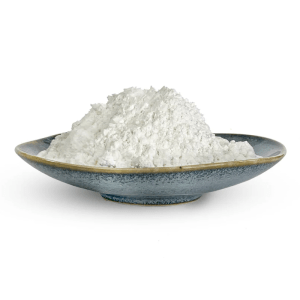
,文章长度约1000词
html
Starch Sugar: Production and Applications in Food Industry
Introduction to Starch Sugar
Starch sugar, also known as glucose syrup or corn syrup, is a sweetener derived from starch. It is widely used in the food industry due to its functional properties and cost-effectiveness. Starch sugar is produced through the hydrolysis of starch, which breaks down the polysaccharides into simpler sugars like glucose, maltose, and higher saccharides.
Production Process of Starch Sugar
The production of starch sugar involves several key steps:
1. Starch Extraction
The process begins with the extraction of starch from raw materials such as corn, wheat, potatoes, or cassava. The starch is separated from other components like proteins and fibers through wet milling and centrifugation.
2. Liquefaction
The extracted starch is mixed with water to form a slurry. Enzymes like alpha-amylase are added to break down the starch into shorter dextrin chains. This step occurs at high temperatures (around 90-110°C) to ensure complete gelatinization and liquefaction.
3. Saccharification
After liquefaction, the mixture is cooled, and additional enzymes such as glucoamylase or beta-amylase are introduced. These enzymes further break down the dextrins into simpler sugars like glucose and maltose. The duration and conditions of saccharification determine the final sugar composition.
4. Purification
The resulting syrup undergoes purification to remove impurities. This may involve filtration, carbon treatment, and ion exchange processes to achieve a clear and stable product.
5. Concentration and Drying
The purified syrup is concentrated through evaporation to achieve the desired solids content. For powdered forms, the syrup is spray-dried to produce crystalline or amorphous starch sugar products.
Keyword: Starch Sugar
Types of Starch Sugar
Starch sugar can be classified based on its composition and degree of hydrolysis:
1. Glucose Syrup
This is the most common form, containing varying proportions of glucose, maltose, and higher saccharides. It is used as a sweetener and humectant in confectionery and baked goods.
2. High Maltose Syrup
Produced by using beta-amylase during saccharification, this syrup has a high maltose content, making it less sweet but more resistant to crystallization. It is ideal for hard candies and frozen desserts.
3. High Fructose Corn Syrup (HFCS)
HFCS is produced by enzymatically converting some of the glucose in the syrup into fructose. It is sweeter than regular glucose syrup and is widely used in soft drinks and processed foods.
Applications in the Food Industry
Starch sugar is a versatile ingredient with numerous applications in the food industry:
1. Confectionery
In candies, chocolates, and chewing gum, starch sugar prevents crystallization, enhances texture, and provides sweetness. High maltose syrup is particularly valued for its non-crystallizing properties.
2. Bakery Products
Starch sugar improves moisture retention, extends shelf life, and enhances browning in baked goods like bread, cakes, and cookies. It also acts as a fermentable sugar in yeast-leavened products.
3. Beverages
High fructose corn syrup
